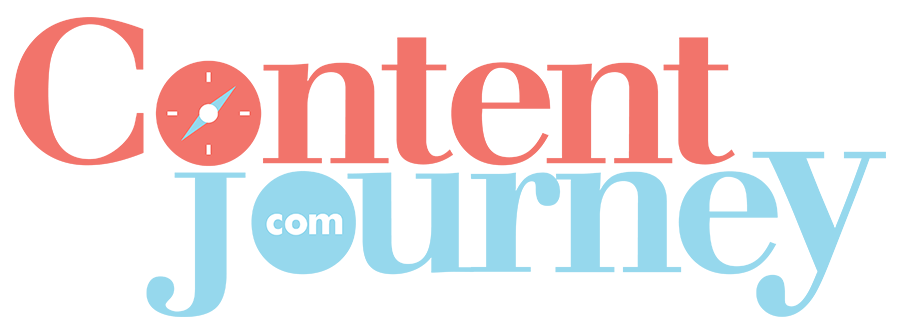Best Practices for Creating Content
The use of content to attract and communicate with customers is on the upswing, and it doesn’t look like it will slow down any time soon. Content marketing is expected to increase globally by more than $584 billion between 2022 and 2027. Everywhere you look, companies are choosing content marketing over more traditional marketing methods. So how can you get the most out of content marketing? By following the best practices for creating content. Not sure what those are? No worries. We’re here to help.
What is Content Marketing?
You probably have at least some idea of what content marketing is, but just in case, let’s unpack the concept a bit.
Content marketing is producing and distributing materials to stimulate interest in a business without necessarily explicitly promoting it. It has various applications within marketing, including attracting new customers or engaging and retaining existing ones.
In content marketing, the content must be valuable, relevant, and consistent. It should establish your industry expertise and, in doing so, instill trust in your customers. When customers find that you can consistently answer their questions, they’re more likely to look to you when purchasing.
Types of Content Marketing
There are multiple formats you can use when creating content marketing. Choosing the right ones for your brand depends largely on your budget, product or service, and audience. We’ve found that a combination of approaches gets the best results.
Blog Posts
Blogs are an excellent tool for solving people’s problems and helping them learn more about your business. And if you use SEO content marketing best practices in your blog writing, you can boost traffic on your website from search.
Email Marketing
Email marketing is a direct form of content marketing where you can share promotions, updates, newsletters, and even gated content directly with your customers. Email marketing is an excellent way to build relationships with your customers and stay at the top of their minds for when they’re ready to make a purchase.
Visual Marketing
People pay more attention to what they can see rather than read. That’s because more than 90% of the information sent to the brain is visual. Many people learn better visually. But more importantly, visuals make them stop scrolling or scanning and pay attention.
Visual content is critical to any marketing you do. Whether posting graphics on social media, uploading a video to your website, or adding images to blog posts, visual content will get you noticed.
Lead Magnets
Lead magnets are a great way to give your audience extra value and grow your email list. A lead magnet is a valuable piece of content you give away for free when a visitor opts in with their email. The lead magnet must exceed the value they are giving you. Once they opt-in to receive the content then, they enter into your sales funnel. Lead magnets include things like downloadable workbooks, checklists, or e-books.
Social Media Marketing
Almost six billion people worldwide use social media. You don’t want to miss out on the chance to connect with at least some of them. Social media marketing is where you share the content you create with your audience and engage with them. It helps proactively spread your messages and build relationships with current and target consumers.
Audio Marketing
Audio content can include anything from audio catalogs to weekly podcasts. It’s an incredible tool to utilize as people continue turning more to consuming content audibly through podcasts and audiobooks. A study from 2021 found that two-thirds of listeners are more likely to consider purchasing or at least researching a product based on a podcaster’s recommendation or a podcast ad.
Why is Content Creation Important?
Being successful in content marketing takes a considerable amount of strategy, planning, and resources. So what are the benefits?
Content creation helps your business:
- Generate Leads. Visitors coming to your website to find answers to their questions or to keep up with industry news are leads for your business. Maybe they’re a potential customer themselves, or maybe they’ll tell their friends and family about your product or service. Either way, conversations around your business will start to develop.
- Build Trust. If you consistently release high-quality and relevant content, you’ll establish yourself and your company as industry experts in the eyes of your customers. This expertise helps lend credibility to your products and will incentivize consumers to try it over that of another company they know less about.
- Improve Search Engine Optimization. Conducting keyword research and writing with keywords will help you rank higher in search engines. SEO improves the visibility of your business, sends traffic to your website, and helps you reach new customers.
- Generate Brand Awareness. Content marketing, especially relevant and consistent content marketing, helps to generate brand awareness among your target audience. People can’t buy what they’re unaware of, making brand awareness vital.
- Excellent ROI. Content marketing is 62% cheaper than traditional marketing tactics, and it brings in three times as many leads.

Establishing Your Content Strategy
Before releasing your first piece of content, it’s essential to establish your content strategy to get the most out of your content marketing. Here’s how to get started.
Map Your Customer Journey
A customer journey map is a visualization of every engagement a customer has with your business and your products or services. Creating one will help you put yourself in the mind of your ideal customer and understand their needs, perceptions, and processes.
Identify Strategic Goals
These goals could be tied to SEO, the number of subscribers on social media, the number of brand impressions, and more. Be sure to use SMART goals that are specific and measurable.
Audit Existing Content
Before you start creating new content, you want to make sure that what you have is working for you. Evaluate the performance of any existing content and see where you can make improvements. A content audit will help maximize existing content and distribute only the highest quality and most relevant information.
Create Your Content Plan
A content plan includes all the data-gathering functions and marketing tasks necessary to achieve your goals. It helps you plan out all of the tasks behind the scenes so you can focus on generating high-quality, compelling content.
Delegate Content Creation Responsibilities
Once you’ve developed your content strategy and mapped out your content, it’s time to delegate content creation responsibilities. Doing so will allow team members to create what they’re good at and free up your time to focus on the bigger picture.
Best Practices for Creating Content
If you’re new to content marketing, it can be challenging to know where to start. You may be feeling overwhelmed but following best practices can make it easier.
- Know Your Audience. Consider their needs, wants, and concerns as you produce your content. Doing so will help you deliver the content they want and need and get the best results.
- Only Publish Your Best. Quality is often better than quantity in content creation. Low-quality content can damage your business’s reputation and brand image. Make sure to have strenuous editorial processes in place to make sure you’re putting out the best content possible.
- Research. You don’t know what you don’t know. Research topics before you write about them to deliver the most accurate and up-to-date information.
- Repurpose Content. Don’t throw away the underperforming content from your content audit just yet. A lot of it can probably be refreshed, repurposed, or repackaged to serve your audience better.
- Be Bold. Consumers typically engage more with bold, unique, and relevant content. Now is the time to think outside the box and take risks. Keep trying new things until something works. Then do more of that thing.
- Use Data. There’s a fantastic wealth of data at your fingertips that can be used to punch up your content. Use relevant, current data from authoritative sources and link to it.
- Hone Your Writing Skills. Consumers relate best to content that’s clear, concise, and straightforward. Try to write with these goals in mind and use platforms like Readable and Grammarly to improve your work.
- Promote Your Content. SEO done right will work every time, but you don’t have to just sit back and wait for results. Promote your content on social media and in your newsletter. Do your part to spread it around.
- Monitor and Adjust. Pay attention to analytics, so you know what’s working and what’s not. Revise your approach to do more of what works.
Content Creation Ideas
Now that you know why you need content and how to approach it, the question becomes what types of content to produce. There are so many options that you’re really only bound by your own creativity. Here are some ideas to consider:
- Q&As. These are perfect if you’re a newcomer to the industry or selling a product or service that people aren’t familiar with.
- Educational Content. Teach your audience something about your niche they should know but may be unaware of. You can also create videos showing them how to use your products or services, how they work best, or tips and tricks for getting the most out of them.
- Customer Reviews. Let your current customers tell the story of why they love your brand. These can be displayed on your website in video or text format.
- Contests and Giveaways. These are great if you want to quickly cultivate interest in your product or services, build your email list or social media following, and let people try out your brand.
- Quizzes and Surveys. Use quizzes and surveys if you want to gather data on your target audience and the performance of your content.
- Repurpose Blog Content. Repurpose blog content into Twitter threads, YouTube videos, Instagram reels, and more.
- Case Studies. Case studies are a great way to display your successes and how you solve customers’ problems.
- Checklists and Infographics. Short-form content like checklists and infographics is easy to view and gets attention. Make them downloadable lead magnets, post them on social media, or embed them into blog posts.
Let Content Journey Create Content for You
Wherever you may be on your content creation journey, Content Journey can help. Whether you need help producing a few extra pieces of content per week or a complete overhaul of your content strategy, we have the experience and the know-how to get it done. Contact us today to get started.







